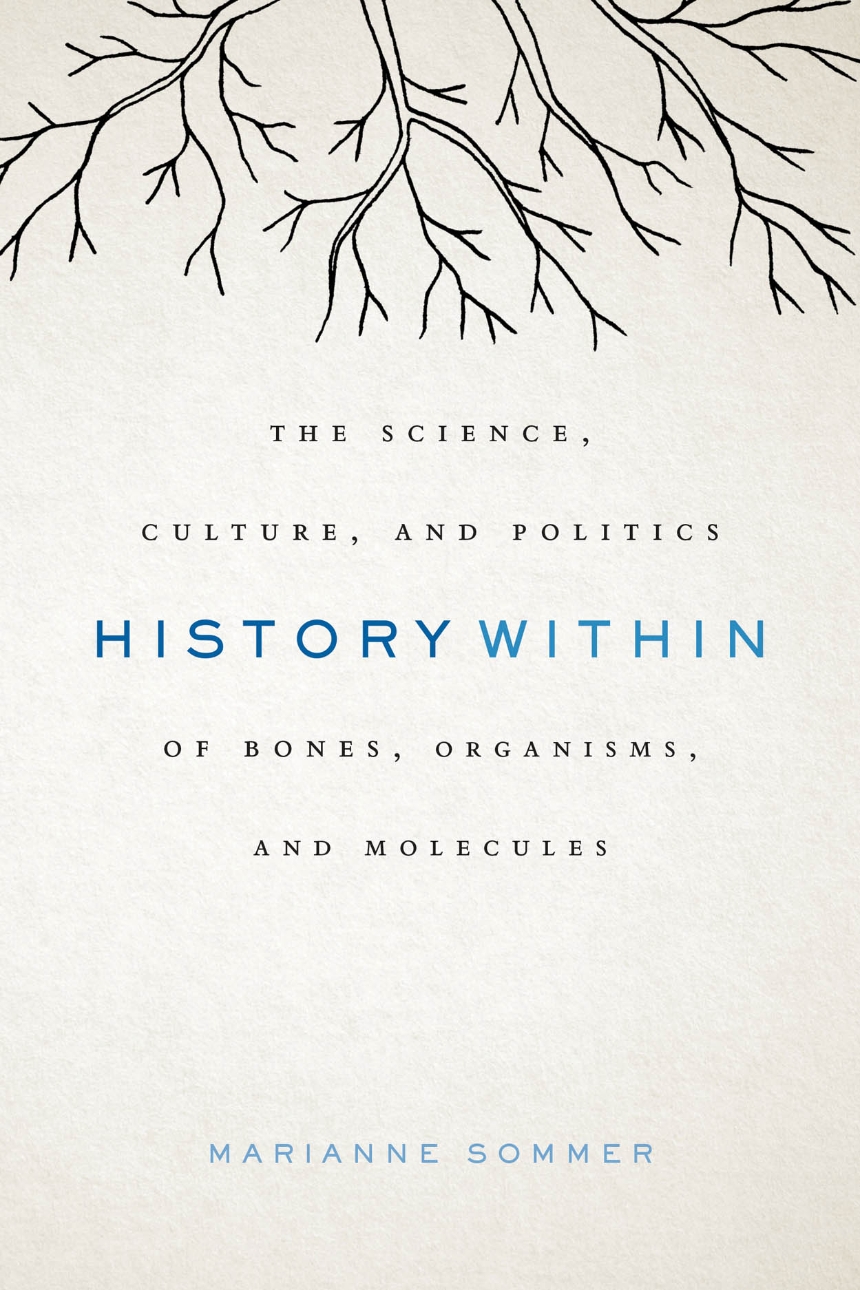History Within
The Science, Culture, and Politics of Bones, Organisms, and Molecules
9780226347325
9780226349879
History Within
The Science, Culture, and Politics of Bones, Organisms, and Molecules
Personal genomics services such as 23andMe and Ancestry.com now offer what once was science fiction: the ability to sequence and analyze an individual’s entire genetic code—promising, in some cases, facts about that individual’s ancestry that may have remained otherwise lost. Such services draw on and contribute to the science of human population genetics that attempts to reconstruct the history of humankind, including the origin and movement of specific populations. Is it true, though, that who we are and where we come from is written into the sequence of our genomes? Are genes better documents for determining our histories and identities than fossils or other historical sources?
Our interpretation of gene sequences, like our interpretation of other historical evidence, inevitably tells a story laden with political and moral values. Focusing on the work of Henry Fairfield Osborn, Julian Sorell Huxley, and Luigi Luca Cavalli-Sforza in paleoanthropology, evolutionary biology, and human population genetics, History Within asks how the sciences of human origins, whether through the museum, the zoo, or the genetics lab, have shaped our idea of what it means to be human. How have these biologically based histories influenced our ideas about nature, society, and culture? As Marianne Sommer shows, the stories we tell about bones, organisms, and molecules often change the world.
Our interpretation of gene sequences, like our interpretation of other historical evidence, inevitably tells a story laden with political and moral values. Focusing on the work of Henry Fairfield Osborn, Julian Sorell Huxley, and Luigi Luca Cavalli-Sforza in paleoanthropology, evolutionary biology, and human population genetics, History Within asks how the sciences of human origins, whether through the museum, the zoo, or the genetics lab, have shaped our idea of what it means to be human. How have these biologically based histories influenced our ideas about nature, society, and culture? As Marianne Sommer shows, the stories we tell about bones, organisms, and molecules often change the world.
496 pages | 29 halftones, 6 line drawings | 6 x 9 | © 2016
Biological Sciences: Evolutionary Biology, Paleobiology, Geology, and Paleontology
History: History of Ideas, History of Technology
Reviews
Table of Contents
Acknowledgments
Introduction
Part I. History in Bones: Henry Fairfield Osborn (1857–1935) at the American Museum of Natural History
Chapter 1. From Visual Memory to “Racial Soul”
Chapter 2. Paper Ancestors? or “A Word-Painting of the Scene and of the Man or Woman”
Chapter 3. The Hall of the Age of Man: The Politics of Building a Site of Phylogenetic Remembrance
Chapter 4. Creative Evolution, or Man’s Struggle up Mount Parnassus
Chapter 5. History Within between Science and Fiction
Part II. History in Organisms: Julian Sorell Huxley (1887–1975) at the London Zoo and Other Institutions
Chapter 6. If I Were Dictator: The Modern Synthesis, Evolutionary Humanism, and a Superhuman Memory
Chapter 7. Evolution in Action: The Zoo as a Site of Phylogenetic Remembrance
Chapter 8. Scientific Humanism in the Extended Zoo: History Within as the Basis of Democratic Reform
Chapter 9. Evolutionary Humanism: Planned Ecology and World Heritage Management through the Colonial Office, UNESCO, IUCN, and WWF
Chapter 10. The Ascent of Man Defended
Part III. History in Molecules: Luigi Luca Cavalli-Sforza (1922–) and the Genographic Network
Chapter 11. Human History as Brownian Motion, or How Genetic Trees and Gene Maps Draw Things Together
Chapter 12. Cultural Transmission and Progress
Chapter 13. The Geography of “Our Heritage”: From the Human Genome Diversity Project to the Genographic Project
Chapter 14. The Genographic Network: Science, Markets, and Genetic Narratives
Chapter 15. The Genographics of Unity in Diversity
Postscript
Notes
References
Index
Introduction
Part I. History in Bones: Henry Fairfield Osborn (1857–1935) at the American Museum of Natural History
Chapter 1. From Visual Memory to “Racial Soul”
Chapter 2. Paper Ancestors? or “A Word-Painting of the Scene and of the Man or Woman”
Chapter 3. The Hall of the Age of Man: The Politics of Building a Site of Phylogenetic Remembrance
Chapter 4. Creative Evolution, or Man’s Struggle up Mount Parnassus
Chapter 5. History Within between Science and Fiction
Part II. History in Organisms: Julian Sorell Huxley (1887–1975) at the London Zoo and Other Institutions
Chapter 6. If I Were Dictator: The Modern Synthesis, Evolutionary Humanism, and a Superhuman Memory
Chapter 7. Evolution in Action: The Zoo as a Site of Phylogenetic Remembrance
Chapter 8. Scientific Humanism in the Extended Zoo: History Within as the Basis of Democratic Reform
Chapter 9. Evolutionary Humanism: Planned Ecology and World Heritage Management through the Colonial Office, UNESCO, IUCN, and WWF
Chapter 10. The Ascent of Man Defended
Part III. History in Molecules: Luigi Luca Cavalli-Sforza (1922–) and the Genographic Network
Chapter 11. Human History as Brownian Motion, or How Genetic Trees and Gene Maps Draw Things Together
Chapter 12. Cultural Transmission and Progress
Chapter 13. The Geography of “Our Heritage”: From the Human Genome Diversity Project to the Genographic Project
Chapter 14. The Genographic Network: Science, Markets, and Genetic Narratives
Chapter 15. The Genographics of Unity in Diversity
Postscript
Notes
References
Index
